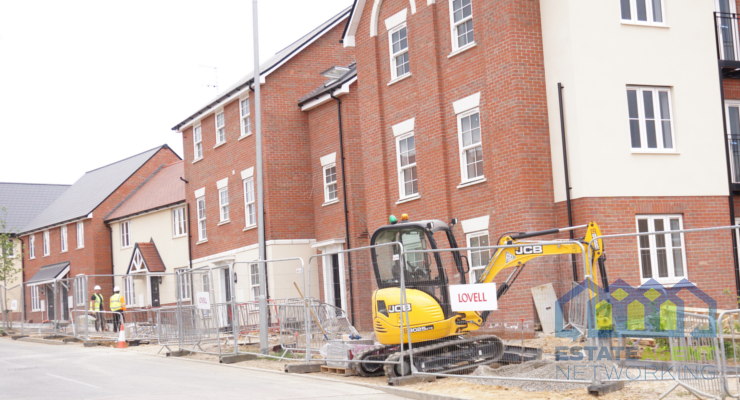Are rogue landlords sitting on £1.2 billion in unaccounted tenancy deposits?
The latest research by Hamilton Fraser’s deposit replacement provider, Ome, has revealed the huge sums of tenant money that is estimated as being held by landlords and agents without protection via a deposit protection scheme.
Ome’s sister company, mydeposits, manages 25% of the total deposit protection market and their latest records show they currently protect more than 876,000 live deposits, suggesting there is an estimated 3.5m deposits protected across the entire market which equates to some £3.9bn in value!
This means that with 3.5m protected tenancy to a value of £3.9bn, the average tenant is paying £1,139 for a tenancy deposit.
Ome compared these statistics with the latest English Housing Survey report which shows an estimated 4.60m tenancies in the private rental sector in 2019. With only 3.5m of these tenancy deposits accounted for in protection schemes, there are potentially 1.1m tenancies that either have not had a deposit protected, do not have deposits, or are using deposit replacement products. At worst, there could be as much as £1.2bn in deposit monies that are not protected.
However, the latest report into deposit protection compliance rates by the Center for Economics and Business Research (CEBR) estimates that 14.5% of all deposits held are not protected by landlords or agents. This means of the estimated 1.1m tenancy deposits that are unaccounted for, just over 500,000 (14.5%) cash deposits could currently be unprotected, putting £578m at risk.
However, this would suggest there are still some 586,000 tenancies in the private rental sector that are neither compliant nor unprotected, suggesting a growing preference amongst landlords to ditch the traditional cash deposit.
Landlord’s deposit taking habits are changing
This could be explained by two factors: firstly the increased acceptance of deposit replacement products such as Ome and, secondly, some landlords opting to request no deposit at all, with the latest research showing as many as 600,000 tenancies in the private rental sector currently opting for one of these two options.
The lack of a rental deposit is already a theme becoming popular with “Build-to-Rent” providers who operate large numbers of rental units and forgo a traditional deposit, mitigating the risk by providing additional complimentary services such as cleaning to their tenants.
As the industry becomes more service-orientated and changes to legislation lead to tenants receiving more consumer protection, landlords and agents are looking at ways in which they can streamline their businesses, with innovation in the deposit sector looking to be fertile ground.
But for those 500,000 landlords across the nation that have taken a deposit and failed to place it in a compliant protection scheme, there are consequences. They run the risk of fines of up to three times the deposit plus the deposit itself. At £1,139 for the average new deposit, it could cost them to the tune of £4,556 per unprotected deposit!
Co-founder of Ome, Matthew Hooker, commented:
“The reality is that the private rental sector is changing, and has been changing gradually through the formal introduction of deposit protection in 2006 and the subsequent launch of the more traditional protection schemes.
It’s impossible to tell just how many deposits are still sat unprotected in the bank accounts of either rogue landlords or agents but based on market data we can make a conservative estimate that this total value runs into the hundreds of millions of pounds.
We’d always advise tenants to check which deposit protection scheme your agent or landlord is part of and to make sure they give you the documentation confirming the deposit is protected.
For landlords and agents that would rather not have to worry about the often arduous and risky process of managing a deposit, we’d recommend looking at products such as our own deposit replacement membership rather than hoping they don’t get caught. It removes the need to take cash deposits but keeps you protected should the worst happen.”
|
Data on Protected Tenancy Deposits
|
|||
|
Live Deposits Protected
|
Total Value
|
Average Deposit Paid
|
|
|
876,249
|
£998,048,056
|
£1,139
|
|
|
3,504,996
|
£3,992,192,224
|
£1,139.00
|
|
|
Hamilton Fraser’s Data
|
Hamilton Fraser’s data (25% market share) multiplied by 4.
|
Total Value Divided by Number of Deposits
|
|
|
Data on Total and Unaccounted for Deposits
|
|||
|
Total Tenancies
|
Number of Deposits Accounted For
|
Number of Unaccounted Tenancies
|
Value of Unaccounted Tenancies
|
|
4,600,000
|
3,504,996
|
1,095,004
|
£1,247,209,556
|
|
Based on Total Deposits Protected in the Above Table
|
Based on Total Tenancies Minus Number Accounted For
|
Number Unaccounted Tenancies Multiplied by Average Deposit Above
|
|
|
Data on Potentially Unprotected and Unaccounted for Deposits
|
|||
|
% of Non-Compliant Tenancies (Unprotected)
|
Number of Unprotected Deposits
|
Value of Unprotected Tenancies
|
Deposits Completely Unaccounted For
|
|
14.50%
|
508224
|
£578,867,614
|
586,780
|
|
14.5% of Total Deposits Unaccounted for in Above Table
|
Number of Unprotected Tenancies Multiplied by Average Deposit Paid
|
The Difference Between Total Unaccounted Tenancies and Total Unprotected Tenancies
|
|









